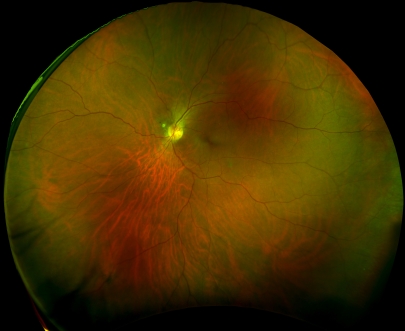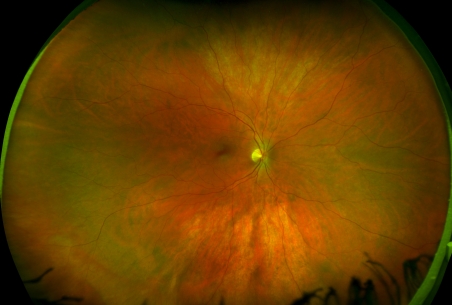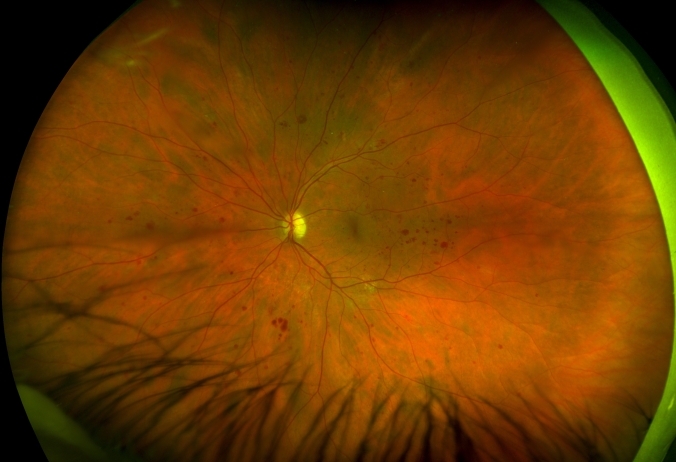Over the past 15 years, the use of retinal imaging has become more and more prevalent in the modern optometric practice. Unfortunately, most vision insurance plans don’t cover it. So, it’s almost always an additional expense. For this reason, sadly, many patients opt out of receiving this additional procedure.
The additional procedure of retinal imaging (and it’s associated cost) are not a way for the eye doctor to pad your bill, however. It’s actually an incredibly useful tool for eyecare professionals to not only diagnose additional vision issues, but also greater health concerns.
Why Are Retinal Images Important?
Doctors need to take a look at your retina during your exam. This is important for spotting issues which could adversely affect your vision. But possibly even more important, the retinal exam allows the doctor to spot overall health issues. The smallest visible blood vessels in the entire body are located in your retina. Because so many of our health issues present themselves in blood flow, this allows your eye doctor to spot health problems such as diabetes and high blood pressure before even your primary care doctor can spot them.

Anecdotally, I even once treated a patient who had his physical the same week as his eye exam. The physical presented that he had a clean bill of health and no concerns. Our retinal exam spotted a blood clot…a stroke waiting to happen.

Example of Arteriosclerosis in digital retinal image
So Why Digital Imaging?
Before the advent of modern digital imaging, doctors had to dilate your eyes, and view your retina while wearing the BIO (Binary Indirect Ophthalmoscopy). The doctor would view your retina using a magnifying lens and a head lamp. This would allow the doctor view the retina in very high detail, but viewing very small segments at a time.


The advent of more and more advanced digital imaging, such as optos, now allow for the retinal exam to happen without dilation being necessary. Not only this, but the digital retinal imaging allows us to capture the entire retina in a single image. By capturing the entire map, there’s no question of anything being missed while sweeping across the retina with a smaller view.

Healthy Retina captured on optos
One of the most valuable aspects of a digital retinal image is overlay. When you have the image taken over subsequent years, each image can be digitally dropped on top of the original image, and any minute changes can be compared and documented. Some of the most concerning aspects of retinal damage can most easily be spotted when comparing images from year to year. When you opt for a dilated exam, instead of the digital image, we cannot overlay images because all the doctor gets to see is the retinal with their own eye and cannot document it with a photograph.
Digital Image Critical for Diabetics
For a diabetic, it is absolutely critical to get the digital retinal image every year. I am diabetic myself, and even though I’m only in my mid-40’s my most recent optos image found the beginning stages of diabetic retinopathy. This particular eye condition has an end result of partial blindness and can be minimized by better maintenance of blood sugar levels.

Diabetic Retinopathy (red dots)
This is a great example of an eye condition which can be managed and observed best by comparing images from one year to the next. This allows your eye doctor to track any small changes in the growth of the retinopathy, and recommend treatment based on the advancement.
You’ve also seen me talk about the dangers of Harmful Blue Light and it’s relationship to developing Age Related Macular Degeneration (AMD). This is another eye condition most easily diagnosed and treated with the comparison of digital images from year to year.
Take Away
There is tremendous value for the eyecare professional, as well as for you, the patient, in getting the digital retinal images at your routine annual eye exam. It’s not an upcharge to grift more money out of you. This is an invaluable tool which allows your doctor to diagnose and treat not just vision related concerns such as detached retinas, but also overall health concerns such as diabetes, hypertension, and even blood clots! It’s a very small price to pay for the peace of mind which could prevent much great vision and health concerns later on.
Thank you to optos for providing imagery in this post
Like what you see here? Follow my blog, Facebook Page, and Twitter for the lastest updates, and please leave comments below!


Another great article by The Optical Jedi! Questions: what is your guess as to how much “market penetration”, so to speak, has digital retina imaging made among optometrists and ophthalmologists? Have the latter embraced it more than the former? If we are hunting for a good eye doctor for our next exam should we ask if they do digital imaging? I assume that would be the icing on the cake and not a deal breaker if we find a good doctor who we like? Thanks O.J.!
LikeLiked by 1 person
My experience suggests it’s fairly common at any practice that has evolved with the times. I know practices still exist which don’t use it, but at least around California it is quite rare, relatively speaking.
LikeLike
Pingback: The Pitfalls of Online Glasses: The Review | THE OPTICAL JEDI: A GUIDE TO THE MYSTERIES OF GLASSES
Pingback: More on Blue Light Filtration: Eyzen+ | THE OPTICAL JEDI: A GUIDE TO THE MYSTERIES OF GLASSES
Thanks for helping me learn more about retinal imaging. I didn’t know that this is a good way to capture the whole eye so that nothing is missed. It sounds very beneficial especially if a patient could start receiving treatment for a possible eye problem right away instead of waiting for it to become bigger.
LikeLike
And the benefit to spotting general health issues is huge too.
LikeLike
Pingback: Diabetes Care | THE OPTICAL JEDI: A GUIDE TO THE MYSTERIES OF GLASSES